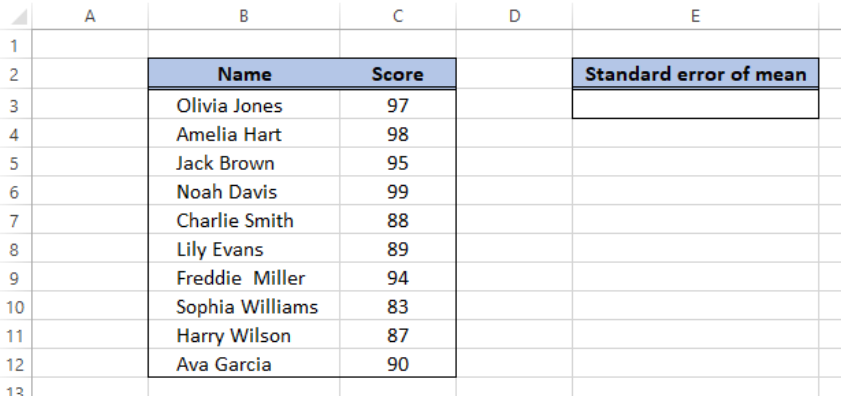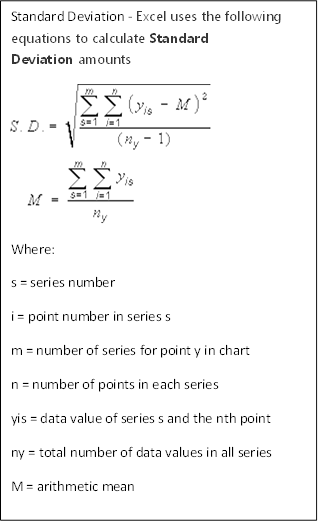
Let us understand the working of Standard Deviation in Excel by some Standard Deviation Formula example.


The below-mentioned table will help you out. The selection of standard deviation formula for a particular task is based on the logical or text values present in the datasets.

Note: Here, Sample means only a few elements are taken out from a large population. Sample ( STDEV.S): Where “S” stands for “Sample”, Only the sample of the data set is considered from an entire data set (N-1). Population ( STDEV.P) : Where “P” stands for “Population”, It includes all the elements from a data set in Population (N). The main difference between sample and population is Whereas b) STDEV.P, STDEVP, STDEVPA, DSTDEVP will come under Population. Here, the 8 types of Standard Deviation are categorized under two groups.Ī) S, STDEVA, STDEV, DSTDEV will come under Sample. In Excel 2016, if we type =std or =dstd, 8 types of Standard Deviation Formulas appear. Note: The function in excel ignores logical values and text data in the sample.Įxcel STDEV function can accept up to 255 arguments where it can be represented by either named ranges or numbers or arrays or references to cells containing numbers. Note: If you have already covered the entire sample data through the range in the number1 argument, then no need to enter this argument.
#Calculate standard error on excel how to
This above worksheet helps you to understand how to perform standard error calculation, when you try such calculations on your own, this standard error calculator can be used to verify your results easily.Excel functions, formula, charts, formatting creating excel dashboard & others Understand more about Standard Deviation using this Standard Deviation Worksheet or it can be done by using this Standard Deviation Calculator The formula to calculate Standard Error is,

Standard Error is a method of measurement or estimation of standard deviation of sampling distribution associated with an estimation method.


 0 kommentar(er)
0 kommentar(er)
